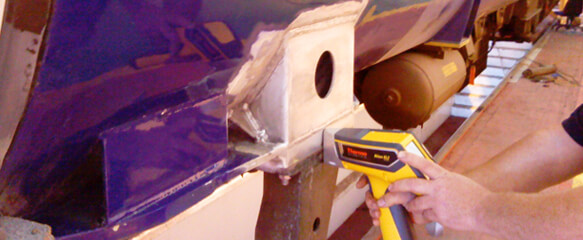Radiation Protection Requirements for use of Handheld XRF Analysers

X-Ray Fluorescence (XRF) is a non-destructive analytical technique used to determine the elemental composition of materials and can also be used to determine the thickness of coatings applied to a material. XRF Analysers contain a small X-Ray Generator, which is a source of ionising radiation.
This article highlights key radiation protection requirements around use of Handheld XRF Analysers, which utilise a number of installed control measures to prevent exposure to ionising radiations. Their use must be in accordance with the requirements of the Ionising Radiations Regulations 2017 (IRR17), which is regulated (other than on nuclear sites) by the Health & Safety Executive (HSE).
For Employers utilising, or who plan to utilise, Handheld XRF Analysers the key requirements can be summarised as:
- Appoint and seek advice from a suitable Radiation Protection Adviser (RPA), who are specialists to help Employers with compliance to IRR17 including providing advice on the safe use of Handheld XRF Analysers (IRR17 Regulation 14) and the requirements for Training in radiation protection (IRR17 Regulation 15)
- Obtain from HSE a Registration Certificate for the practice of using an X-Ray Generator (IRR17 Regulation 6)
- Develop a suitable Radiation Risk Assessments (IRR17 Regulation 8) for the use of Handheld XRF Analyser taking into account the Installed Control Measures (IRR17 Regulation 9) which may include shielding, beam limitation/collimation, warning lights, interlocks, proximity switches, backscatter detectors and two handed operation, (which is nearly always practicable, there are not many applications that can reasonably justify one handed operation), together with a suitable System of Work (which includes radiation protection training, procedures and use of suitable Radiation Monitoring instruments (IRR17 Regulation 20) and operators wearing extremity personal dosimetry for reassurance purposes (i.e. to prove that the control measures are effective and hence radiation exposures to the hands are negligible)
- When using Handheld XRF Analysers there will be a need to create a Radiation Controlled Area (RCA) (IRR17 Regulation 17) in the immediate work area for the period of time when the analyser is being used. This area need not be physically demarcated but should be at least delineated unless it is contained in a suitable interlocked enclosure (which should be used for small items) and will need to display a suitable Hazard Warning/Designated Area Sign (IRR17 Regulation 19). Local Rules must also include Contingency Plans for all reasonably foreseeable radiation accidents
- Where appropriate develop Local Rules, which are the main operating instructions intended to restrict any exposure in Radiation Controlled Areas, together with appointment of Radiation Protection Supervisors (RPS) to help the Employer ensure compliance to the Local Rules (IRR17 Regulation 18)
- Ensure that the analyser is subject to routine Pre-Use Testing/Inspection and then routine Maintenance normally undertaken by the manufacturer (IRR17 Regulation 11).
L2 Business Consulting Limited is an HSE recognised RPA Body who can provide advice to Employers on the selection and use of Handheld XRF Analysers.